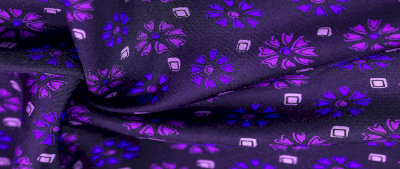What Is Triacetate?

Triacetate, a semi-synthetic fiber, is derived from plant-based materials such as wood pulp or natural animal fibers, which are chemically processed. It is recognized for its environmental friendliness and ease of processing.
Uses of Triacetate
Triacetate fibers are utilized in various products including Japanese kimonos, shirts, neckties, scarves, linings, umbrellas, curtains, and accessories. Additionally, they are sometimes employed in cigarette filters due to their moisture-absorbing properties, which prevent tobacco leaves from becoming moist.
Characteristics of Triacetate
Produced from wood pulp treated with acetic acid, triacetate’s cellulose hydroxyl groups are replaced by acetate groups. Its benefits include moisture absorption, retention, lightness, silkiness, elasticity, thermoplasticity, and dyeability, contributing to its luxurious feel and suitability for outdoor products. However, it has limitations like low alkali and heat resistance, susceptibility to discoloration by exhaust gases, and solubility in nail polish remover, which can lead to fading and discoloration.
Structure of Triacetate
Acetate fibers include triacetate, diacetate, and monoacetate, differentiated by the number of acetate groups attached. Triacetate has three, diacetate has two, and monoacetate has one acetate group. ‘Acetate’ often refers to diacetate but can also imply the inclusion of triacetate and diacetate.
How to Select Triacetate
When selecting triacetate, consider its superior dyeability, strength, elasticity, and heat resistance compared to diacetate. It offers a wide color range and maintains strength when wet without staining easily. Its soft, elastic feel reduces wrinkling, but it dissolves in certain chemicals and is susceptible to discoloration by fumes. Triacetate cannot be cleaned with alkaline detergents and is difficult to de-wrinkle after laundering.